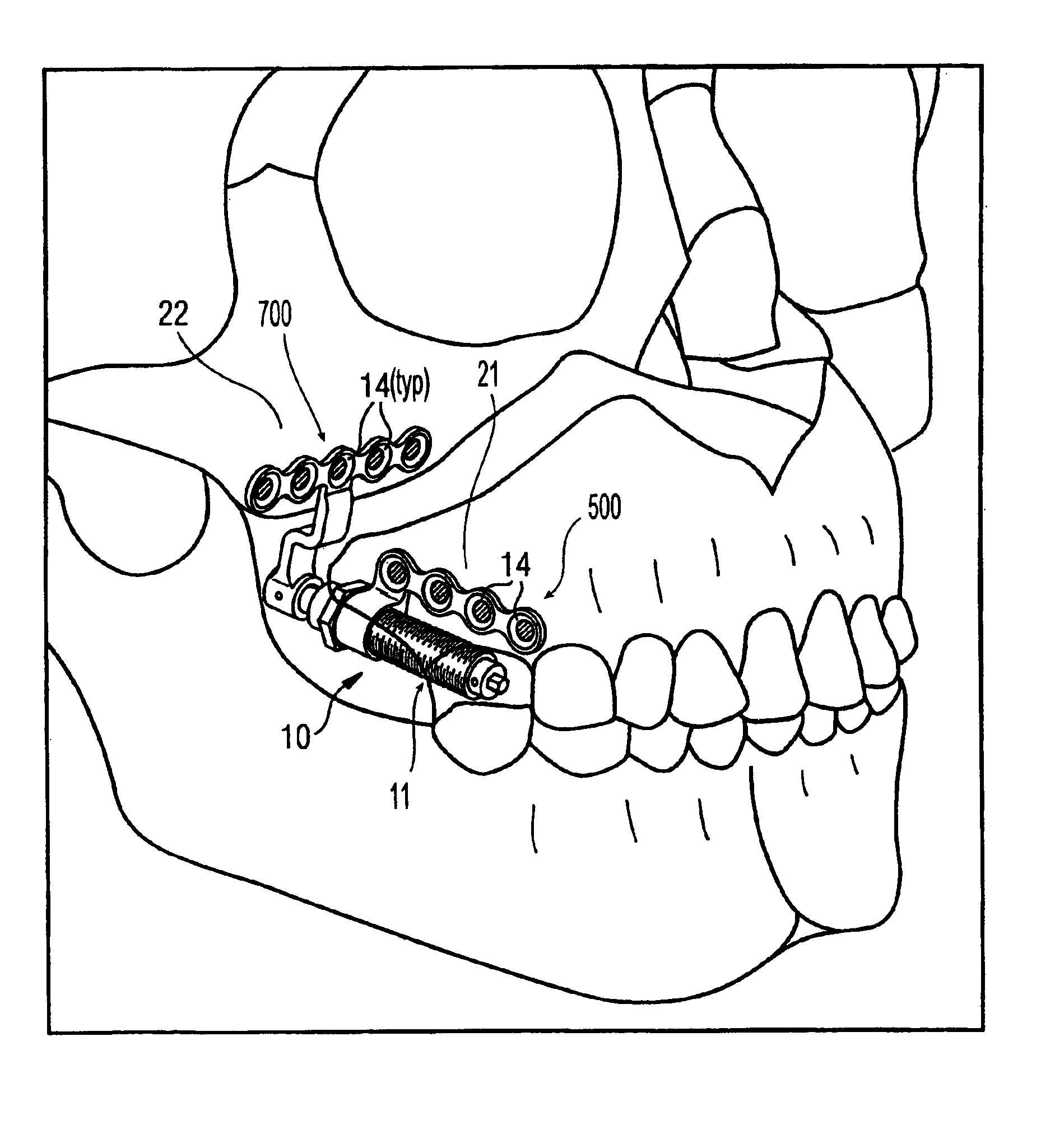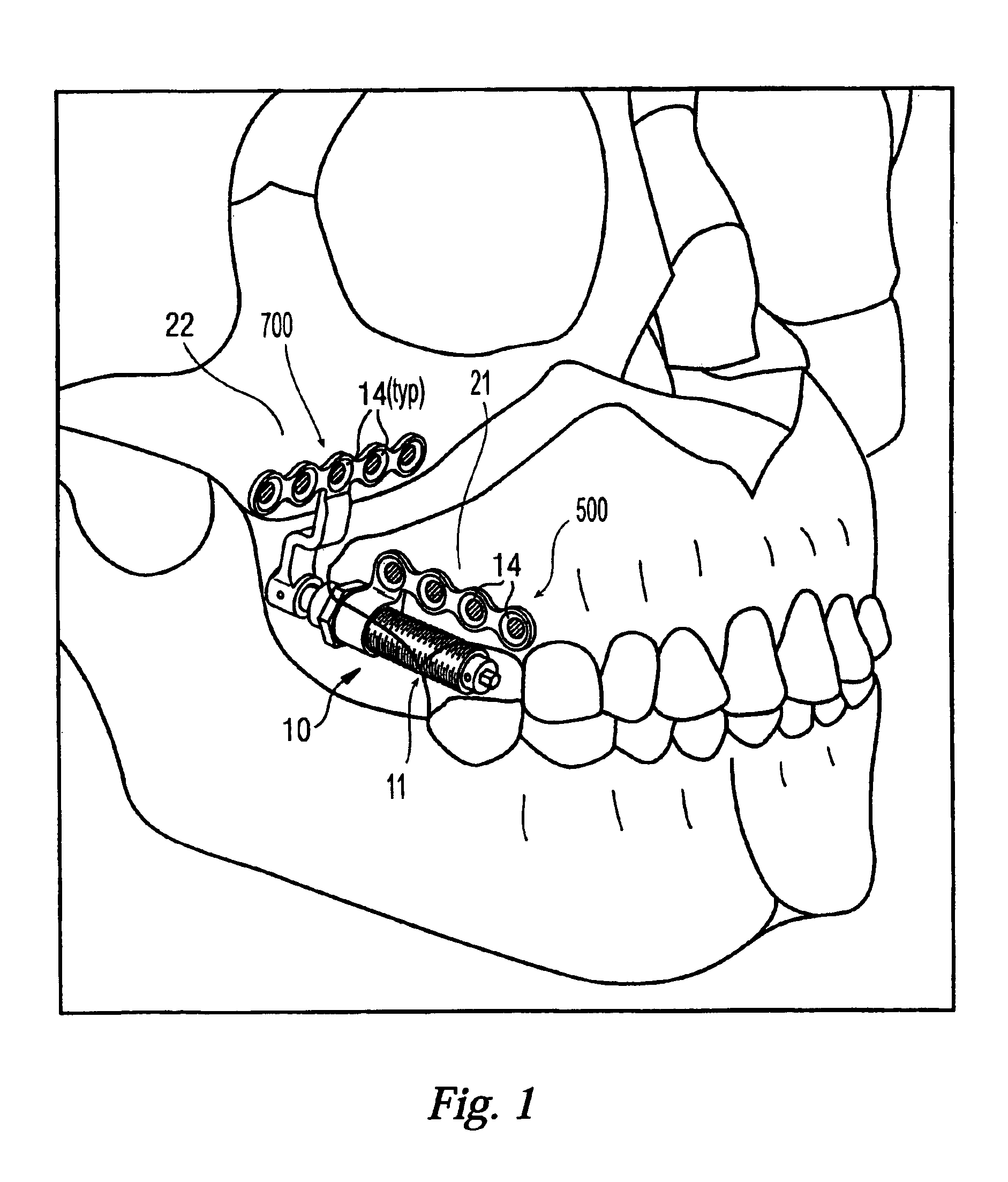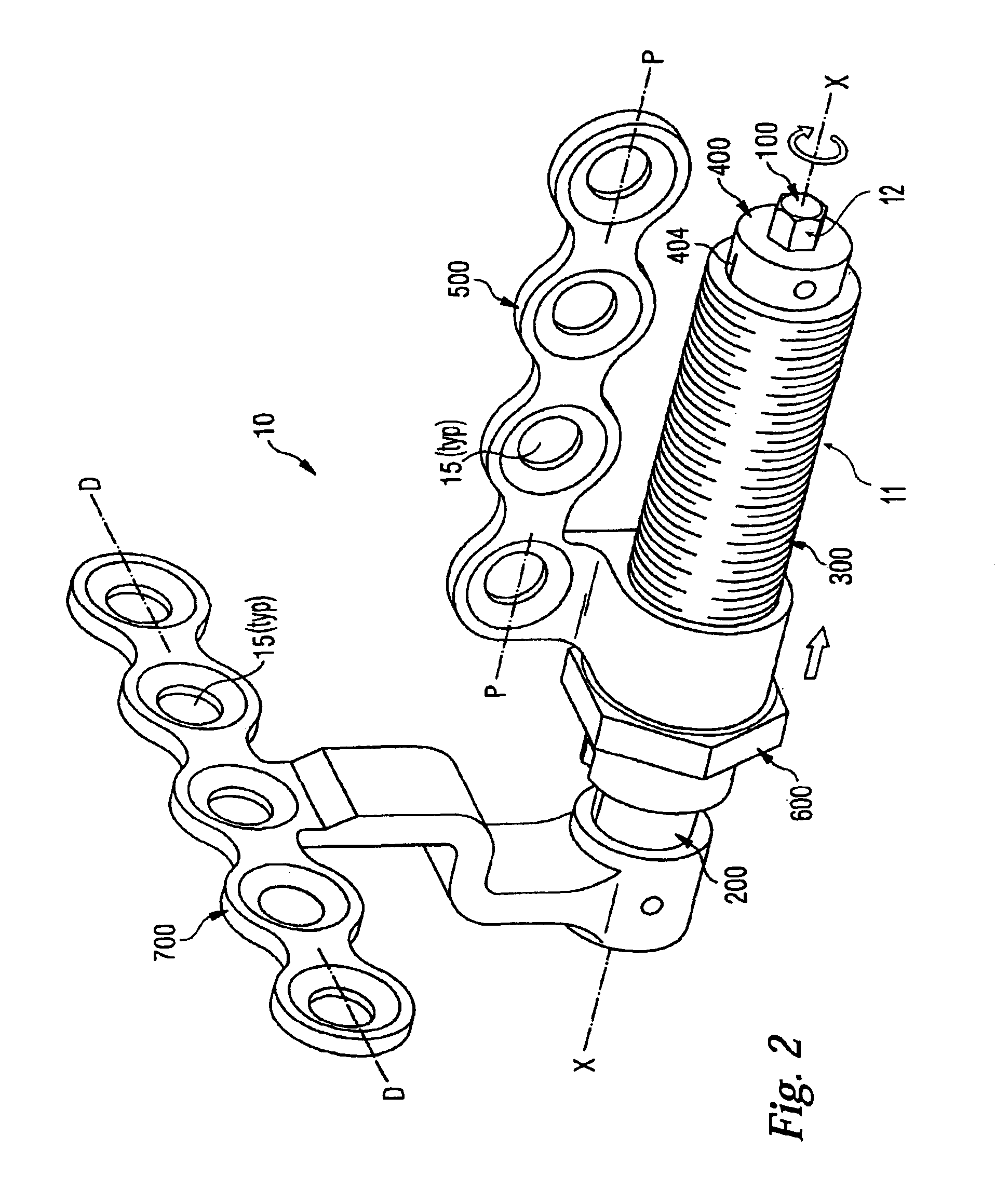Compact maxillary distractor
a distractor and compact technology, applied in the field of orthognathic systems, can solve the problems of limited orthognathic procedures involving maxillary advancement, limited maxilla advancement, and limited maxilla growth, and achieve the effect of increasing the separation of the maxilla and the zygoma
- Summary
- Abstract
- Description
- Claims
- Application Information
AI Technical Summary
Benefits of technology
Problems solved by technology
Method used
Image
Examples
Embodiment Construction
[0043]The orthopedic device of the present invention is discussed herein with reference to a preferred embodiment adapted to be used in a linear distraction of the maxilla from the zygoma.
[0044]As seen in FIGS. 1, 2, and 3a, the orthopedic system 10 generally consists of distraction assembly 11 and anchors in the form of proximal and distal bone plates 500 and 700, respectively. The distraction assembly 11 has a proximal, or adjustment end 12 and a distal end 13. The orthopedic system 10 is affixed to maxilla 21 and zygoma 22 by bone screws 14 which are inserted though screw-holes 15 in footplates 500 and 700. In use, the entire orthopedic system 10 is implanted so that the distal bone plate 700 is attached to the zygoma 22 and the proximal bone plate 500 is attached to the maxilla 21, with the distraction assembly 11 nestled within the buccal sulcus. It will be understood that with reference to the various elements of the present invention, the term proximal is used to refer to the...
PUM
 Login to View More
Login to View More Abstract
Description
Claims
Application Information
 Login to View More
Login to View More - R&D
- Intellectual Property
- Life Sciences
- Materials
- Tech Scout
- Unparalleled Data Quality
- Higher Quality Content
- 60% Fewer Hallucinations
Browse by: Latest US Patents, China's latest patents, Technical Efficacy Thesaurus, Application Domain, Technology Topic, Popular Technical Reports.
© 2025 PatSnap. All rights reserved.Legal|Privacy policy|Modern Slavery Act Transparency Statement|Sitemap|About US| Contact US: help@patsnap.com



